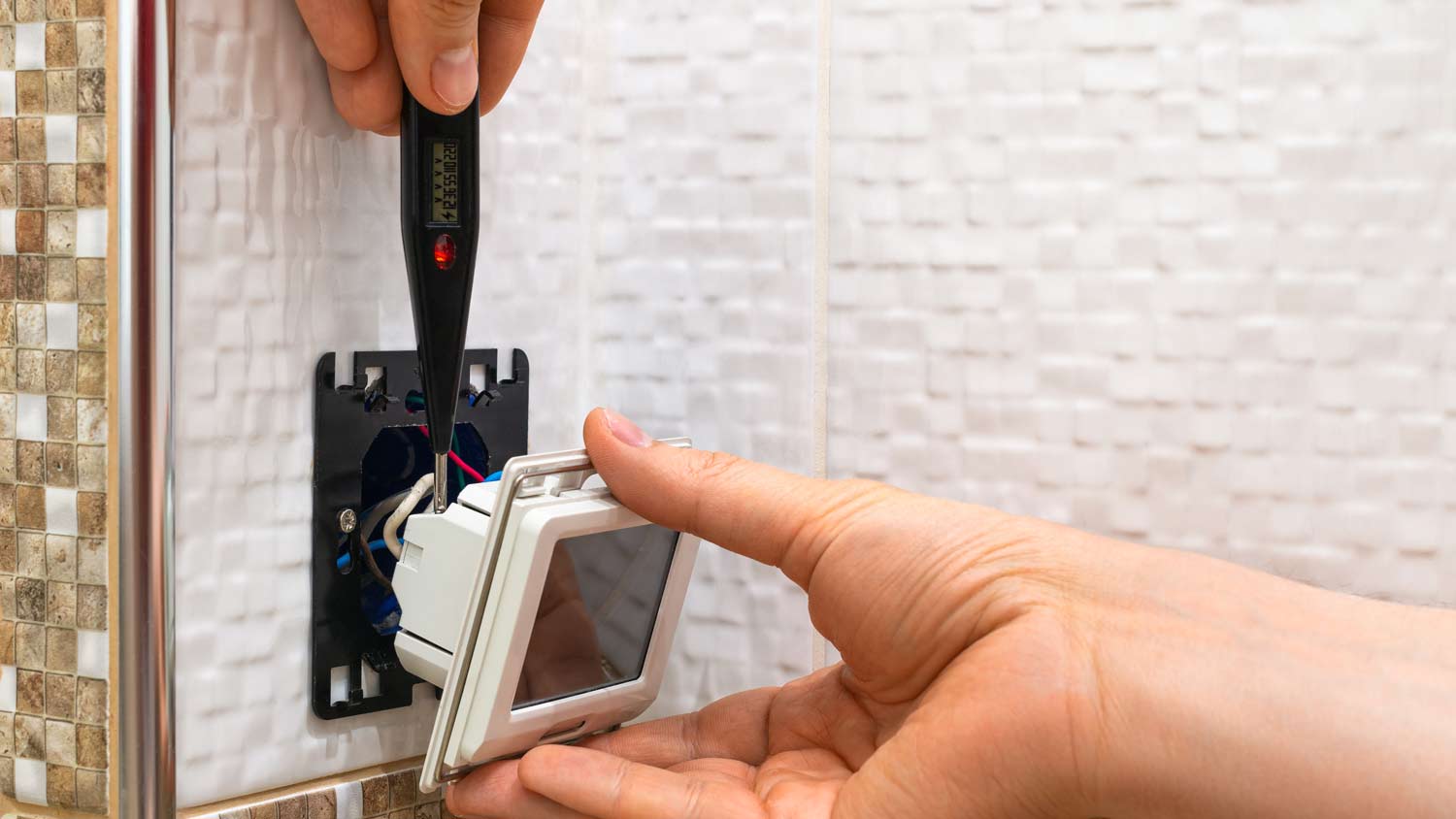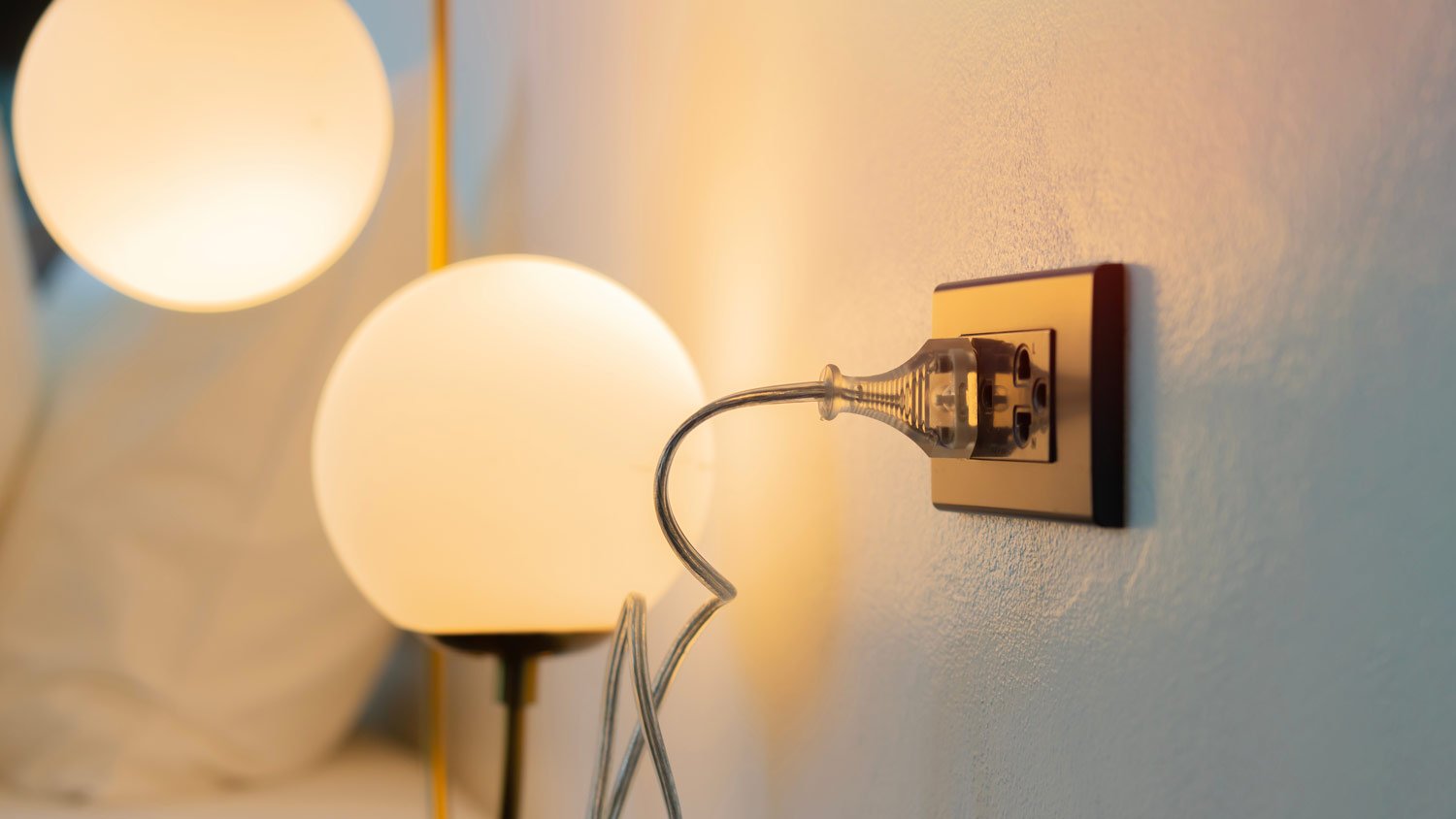
If you’re planning to hire an electrician to install outdoor lights, consider cost factors like light type, bulb type, quantity, and more.
The neutral wire isn’t actually neutral—here’s what to know


The neutral wire is a crucial part of an electrical system, ensuring electricity flows back to the panel after powering a device.
Modern electrical systems follow a standard color code, with white for neutral, black for hot, and green or bare for ground.
In older homes, wiring colors may not follow current standards, so using a voltage tester is always recommended.
Unlike direct current (DC) systems, which use positive and negative wires, alternating current (AC) systems require a neutral wire for proper function.
Electrical wiring might seem straightforward, especially with color-coded wires and handy diagrams on the back of switches, outlets, and plugs. But behind those wires lies potential danger. Understanding the purpose of each one, especially the neutral wire, is crucial for personal safety and proper installation. So, what does the neutral wire do? Let’s break it down.
The neutral wire is often the white wire found alongside the black wire in an electrical circuit. Its main job is to provide a path for any unused electricity to return safely to the electrical panel. When you look at an outlet or another electrical device, the neutral wire is typically connected to the white or silver screw, whereas the black wire, known as the hot wire, is linked to the gold screw. Additionally, the ground wire is usually attached to the green screw.
The neutral wire in a circuit runs from the electrical panel to the device and then back again. It can connect to other neutral wires in junction boxes, but should never have a switch or device connected to it.
A neutral wire completes the flow of the electrical circuit, serving a necessary function that allows the electrical system to work safely and correctly. Think of an electrical circuit as a large loop: Electricity flows through the panel, through a circuit breaker, and out to the devices through the hot wire, which is typically black in residential wiring.
Once the electricity reaches the device, only a portion is used to power it. The unused electricity must return back to the panel through the neutral wire, which connects to the neutral bus bar (a grounded bar in the electrical panel).
This setup allows electricity to flow through each circuit continuously and back to the panel safely. Without a neutral wire, the electricity that flows to the device can’t return, which can cause overheating and other dangerous electrical hazards.
Modern electrical systems follow a specific wire color code, which makes it clear which wires are the live, neutral, and ground wires. However, it’s important to note that wiring color codes haven’t always been standardized in the U.S., so it’s always best to use a voltage tester rather than relying on color alone.
In most residential wiring, the standard color codes are:
White: Neutral, but can carry current when the circuit is active
Black: Hot or live wire
Green (or bare): Ground

Confusingly, not all circuits have neutral wires. Circuits carrying 208-volt power to certain devices (not usually residential, but still worth noting) have three hot leads and one ground, but no neutral. 240-volt circuits don’t have white neutral wires, using gray wires for neutrals instead.
Homes that do not have neutral wires on their 110- or 120-volt circuits will need to hire an electrician to install them during renovations or upgrades. For this process, it’s best to call a local electrician to handle the job. These pros know how to safely upgrade home wiring and electrical services to ensure that the proper, code-approved devices and wiring are in place.
It’s important to understand that direct current power does not require a neutral wire while alternating current power does. Direct current (DC), such as the electricity provided by the battery in a car, does not use a neutral wire. Instead, these circuits use a positive wire and a negative wire. This facilitates the electricity’s flow, which is a continuous, one-direction loop.
Alternating current (AC), like the electricity used to power homes and buildings, is different. Alternating current is constantly switching between the positive flow of charge and the negative flow of charge, changing direction every so often. A neutral wire helps facilitate the flow of current in this situation.
Although neutral wires and ground wires seem similar at a glance, they serve very different purposes in your home’s electrical system. The neutral wire carries electricity back to the power source, completing the circuit after the current has powered a device or appliance. Since it plays an active role in the system, it carries a charge whenever the circuit is in use.
On the other hand, the ground wire is a safety feature designed to prevent electrical hazards. While it doesn’t usually carry a charge, it provides an alternate path for electricity to flow safely into the earth in case of a short circuit or wiring failure. The key difference is that the neutral wire is essential for the circuit to function, whereas the ground wire acts as a protective measure against electrical faults.
Understanding how neutral wires function is crucial when planning a new electrical system or an upgrade to an outdated system. However, even those with a firm grasp on the difference should never attempt this project without the help of a professional electrician. The average cost to rewire a house is between $600 and $2,600, though completely rewiring a large, older home can cost $6,200 or more. While hiring a pro adds a significant amount to your budget, it’s essential to ensure a safe, efficient setup that will last for many years to come.
From average costs to expert advice, get all the answers you need to get your job done.

If you’re planning to hire an electrician to install outdoor lights, consider cost factors like light type, bulb type, quantity, and more.

Looking to size up your electrical system to cover higher usage and improve efficiency? Use this guide to see the cost to upgrade an electrical panel.

Wondering about the cost to ground a house? Pricing depends on the material of the rod and how much the electrician charges per hour.

If you’ve been wondering “why is my power bill so high,” consider these common reasons for hefty electric bills.

Can electrical outlets be installed sideways? Learn if orientation matters when installing outlets and why it may be installed sideways.

High electric bills or switches that don’t work properly are some of the most common electrical problems in a home. Learn about other electric issues you may have in your home, what causes them, and how to solve them before they become dangerous.